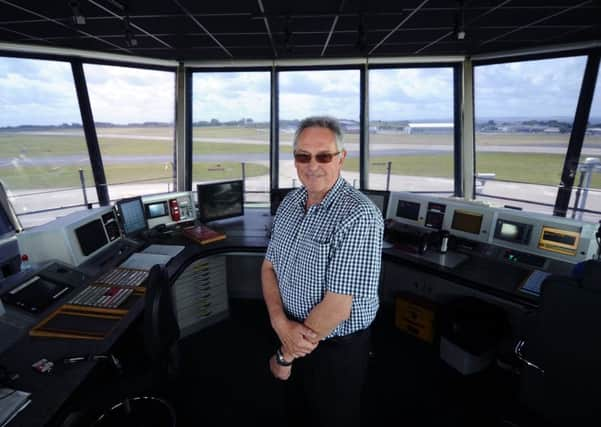How flights from Leeds Bradford are tracked from '˜the best office in the airport'


The head of air traffic services operates from the control tower and has a panoramic view, which on a good day boasts Otley’s Chevin and faraway skyscrapers in its field of vision.
But there is little time to just sit and scan the great sights – with 100,000 jetting off each week at peak season, concentration is key as workers guide planes up and down from what Mr Siddoway calls the “motorways in the sky”.
Advertisement
Hide AdAdvertisement
Hide Ad“One of our big issues is human factors – we try and make sure there are no distractions,” says the 60-year-old former Royal Air Force worker.


The two rooms that form air traffic control (ATC) are quiet, calm and well-lit by design, with each piece of kit different in appearance to avoid confusion between them.
“We try and engineer out the possibility of making mistakes with our equipment,” said Mr Siddoway.
And there is plenty of gear to get to grips with.
Just over a year ago ATC was made “future proof” with the installation of new radar equipment, computers and 3D simulators – a major three-year project costing around £4m which replaced a wooden structure after 30 years.
Advertisement
Hide AdAdvertisement
Hide Ad

Ultimately this meant a 40 per cent increase in the airspace that ATC employees in Yeadon can help to manage, which currently reaches up to 7,000 feet – above that and other airports take the reins.
Twenty-two controllers and nine assistants work under strict shift patterns to ensure a safe and efficient workload – no more than two hours on without a minimum 30 minute break on an eight-hour shift.
Mr Siddoway, who lives in Leeds, does his utmost to recruit people who are already working at the airport.
He said: “We really want people with an aviation interest and aviation background. I find they are the best assistants.
Advertisement
Hide AdAdvertisement
Hide Ad“That’s a really good way of getting locally made, locally employed people.”
Controllers are in a “three-way contract” with the pilot and co-pilot, but they can see what is in the sky and give pilots permission (or not) to land whether it is an emergency or planned stop.
Uncomfortable situations such as planes getting too close to each other happen “very rarely,” said Mr Siddoway.
But when called upon a simple technique can be used to alert pilots – controllers change their usually neutral tone of voice to a more urgent one.
Advertisement
Hide AdAdvertisement
Hide AdThere are three layers of electricity backup so the tower can keep going through any outage of the mains. And if everything did go down completely they can still bring flights in – by using their manual guides to where planes are.